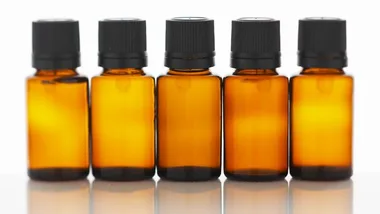The significant health benefits of consuming extra virgin olive oil are almost as persuasive as the pure pleasure of tasting a freshly pressed oil. Study after study has reinforced just how valuable this heart-healthy monounsaturated fat is for our health. It decreases the risk of most chronic diseases, including heart disease, arthritis and Type 2 diabetes.
It can help you lose weight, reduce blood pressure, improve brain function and, when used in place of saturated fats, can lower cholesterol. All of which lower the risk of many cancers.
With so much choice of olive oils on the supermarket shelves, picking up the best bottle can be confusing. Here are some key factors to consider:
Fresh is best
Unlike fine wine, olive oil doesn’t improve with age. In fact, the fresher the oil, the more health benefits it retains and the better the flavour. The Australian olive oil harvest is between April and June, so look for the harvest year on the label and choose oil from the current season.
After opening, it should be consumed within about four weeks, so buy in small quantities and store in a cool cupboard away from the light, preferably in a dark bottle to prevent oxidation.
Go Aussie
It is commonly believed in Australia that imported European olive oils are superior to the local varieties. Yet the time that it takes to pick, press, bottle and transport oils from the other side of the world to our shores means that by the time many oils get here, they are already past their prime.
In addition, imported oils are not subject to the same stringent checks that our local industry is, resulting in many poor-quality, mass-produced oils ending up on our shelves.
The Australian Olive Association (australianolives.com.au) imposes a strict code of practice on the local industry, guaranteeing the authenticity and quality of the oils it produces. Australian oils are harvested and pressed within hours and, after being bottled, are transported to retailers nationally.
Local olive growers are now producing some of the best olive oils in the world, so the freshest and finest quality extra virgin olive oil is at our fingertips.
Some like it hot
The flavour that shallow frying in extra virgin olive oil imparts is simply delicious, but there has been a lot of misinformation about cooking with it. Much of the confusion is surrounding the “smoke point”, or the temperature at which an oil starts to smoke.
The smoke point of high-quality extra virgin olive oil is relatively high at 210°C, well above the recommended 180°C for shallow frying, so it is absolutely fine to cook with.
If your oil is smoking, it simply means your pan is too hot. Maligning the oil is
a bit like shooting the messenger.
Here are some common terms and what they actually mean.
** Extra Virgin Olive Oil*
This is the natural juice extracted from the whole olive. It contains and retains all the special properties of the olive fruit
that have a positive impact on health. It is the highest quality olive oil and is produced without any solvents, chemicals or excessive heat.
** Olive Oil*
What is labelled simply as “olive oil” is typically a blend of a large percentage of refined olive oil and a small amount of extra virgin olive oil. Refined olive oil, like most seed oils, is produced by treating poor-quality oil with chemicals and high temperatures, which results in a bland oil with fewer health benefits.
** Light and extra light oils*
These are other marketing terms used to describe the blend of refined and extra virgin olive oil. These terms are misleading, as the oils are not reduced fat or lower in calories and are certainly not better for you. They are likely to be bland and instead of being lower in fat, they are simply lighter in flavour and colour.
So, the next time you’re at the supermarket and wondering which olive oil to buy, don’t hesitate to pick up an Australian extra virgin olive oil.



